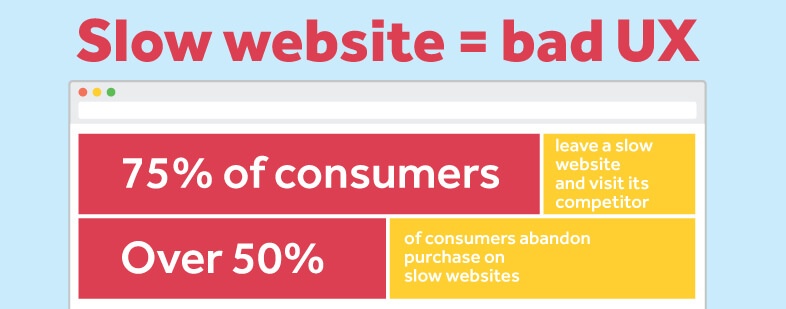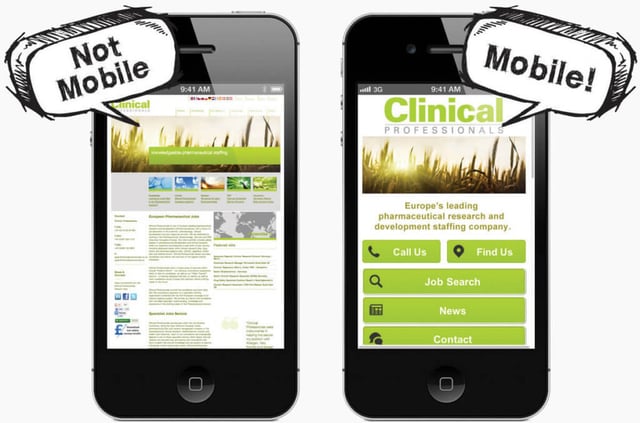If you read any advice on content marketing, it will probably tell you to launch a blog. That's hardly surprising. But there are some blogging habits that you need to stop. Blogging is proven to increase leads and sales and to build authority, and the latest statistics from the Content Marketing Institute show that:
80% of B2B marketers and 75% of B2C marketers use blogging as one of the pillars of their content marketing strategy.
[Tweet "Around half of all marketers expect blogging to be a critical success factor"]
But before you can get the benefits of blogging, people have to care enough about it to read and stick around. Here are some of the issues that often drive readers away.
1. They Don't Know It's There
Sometimes the reason people don't care about your blog is either because they can't find it in the first place or they don't know what it's about. Take care of this with search engine optimization (SEO). Look after SEO and your blog is more likely to show up in search results, with a description that reflects your content. That means that people who are interested in your content can find it.
If you're using WordPress to run your blog (as most people are) then look after SEO with the Yoast SEO plugin. This free plugin will help you set SEO-friendly titles and meta descriptions for your posts and pages and will guide you to pick focus keywords for each piece of content. It will also analyze your site to show where you can improve. Use this plugin and your SEO will definitely improve, making it easier for people to find your blog. Here's some more great advice on SEO fixes for a WordPress blog.
There's one more thing to look at. When you're in the WordPress dashboard, navigate to Settings - Reading Settings then scroll down to Search Engine Visibility and make sure the "discourage search engines from indexing this site" box is unchecked. People often enable this while setting up their blog, and it's easy to forget to disable it again.
2. It Provides Poor User Experience (UX) and Usability
 Source : https://www.crucial.com/
Source : https://www.crucial.com/
With SEO sorted, people will find your blog, but SEO isn't enough to make them care. Another important factor is their experience when they visit your blog. This is about usability (whether it's easy to learn and use) and user experience (a broader category). Jakob Nielsen has a good explanation of how they differ.
What this means for your blog is you need to look after issues like:
- Design - poor design can drive people away. If your colors are unappealing or the site design isn't appropriate for the audience, people will stop briefly and then go elsewhere. Sure, content is more important in the long run, but you have to look after design if you want to attract people in the first place.
- Navigation - When people come to your blog, they are looking for information. Make it easy to find with navigation labels that make sense and highlight what's most important for both you and your audience.
- Search - put a search box in a prominent place so people can find the content they need. And if you have a lot of content, consider collecting your best posts on each major theme on a single page and linking that page in your sidebar.
Even issues like typography and content placement can have an effect on usability and UX. Check user flow reports in Google Analytics and heatmap and click data from other tools like Crazy Egg and SumoMe to find areas where your blog is a turnoff for readers and visitors.
3. It's Not Mobile Friendly

Source : https://www.mobilizeyourenterprise.com/
Mobile-friendliness is related to both SEO and UX, but it's so important it needs its own section. Google recently announced that it would be rolling out a mobile-first index. This is hardly a surprise given that mobile devices are everywhere. Here's what it means for your blog:
- Pretty soon, if your blog isn't mobile-friendly, it won't show up where you want in search results.
- If people using mobile devices can't interact with content as they expect, they will go elsewhere.
The result of that is online invisibility, which is the last thing you want. Avoid this by:
- Using a mobile-friendly, responsive WordPress theme that resizes content to fit any device (and still looks good)
- Ensuring that content loads quickly, especially images
- Checking that navigation menus are easy to use if you're on a touch screen.
Finally, assess your blog with Google's mobile friendly checker to see if there are any other issues to address.
4. One Of The Worst blogging habits : You're Writing for the Wrong People
I'll tell you a mistake I made in my early days of blogging. I started a blog which I wanted to use to attract clients and for a while, I couldn't understand why emails from clients weren't flooding my inbox. One day it clicked: the content I'd created was great for writers like me, but wasn't the right stuff to appeal to potential clients. Once I changed that, my site became a client magnet.
Great content for the wrong audience will fail, so get to know who you're writing for. You can find this information in Google Analytics by looking at the audience reports. These cover demographics, interests, market segments, location, language and more so you can build up a nice profile of who your typical blog visitor is. Supplement this with information from social media tools like Twitter Analytics and Facebook Insights so you can laser target your content strategy.
5. Your Content is So So
With so much content around competing for readers' attention, you sometimes have to offer a little bit extra. Not every piece of content in your content marketing plan will be a powerhouse, but you need to add in a few pieces with potential for being shared and quoted widely. I'm the first to admit that sometimes you just strike lucky, but you can also help to make your own luck in creating quality content that meets your audience's needs. Vary your content mix by:
- Seeing what's trending on Buzzsumo that you can use as inspiration or respond to
- Checking out your competitors' performance by seeing which content gets read and shared most. Sprout Social has an excellent guide.
- Paying attention to the questions your customers ask via customer service and social media platforms, as well as blog comments
- Making a note of news trends that can give your content an additional boost.
Finally, there's one last tip. Sometimes people love your content but you don't see that reflected in social shares. Check your site and see whether your social share buttons are working right and whether they're in the right place. Make sure your social media handle is included for easier tracking, and if you're pre-populating tweets, ensure that those tweets are pulling in the right images. These things can make a big difference to the reach of your content.
The truth is, you need an edge if you're going to win the battle for attention; creating great content for the right people will give you that edge. If you also make it readable on any device and easy to navigate, you'll be ahead of the game.





